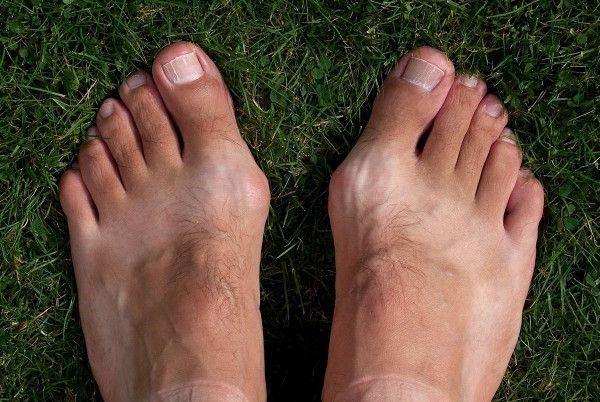The foot problem that people tend to be embarrassed about: bunions. They are more common than you think, and you do not have to be shy about it.
Understanding this condition will definitely allow you to control the fate of your feet!
Is bunion an extra bone?
Often described as a bump on the side of the big toe, bunions, are also known as Hallux Valgus or Hallux abductovalgus amongst medical professionals. A bunion is a misalignment of the bones. It happens when the hallux (the big toe) leans towards the second toe instead of pointing forward, causing a bulge to form. This malformation is the head of the metatarsal bone protruding.

The development of bunions is progressive, and there are 4 stages of development (see image). Bunions usually begin as a mild protrusion at the joint, which becomes increasingly prominent over the years as the bones gradually change their angle. In severe cases, the second toe can overlap the big toe.

Did my shoes cause the bunion to form?

Bad shoes are not the root cause, although using pointed shoes and/or heels may worsen any existing deformity. Bunions are often hereditary. One can inherit foot types, genetic factors or walking patterns that can impact how the foot functions, and possibly be more susceptible to developing a bunion.

Mother and son having only left bunions. Genetics at play!
Only the elderly have bunions, right?
People of all age groups can develop bunions. Bunions can develop much earlier in life, and may become quite pronounced by the teenage years. It is often a neglected condition and many patients tend to seek treatment for their bunions only when their joint becomes stiff, painful or causing problems with mobility. By then, surgery may be the only effective option of treatment. So, if you notice a bunion in your child or your youth, it is wise to see a podiatrist for an assessment to prevent further deformity.
Young child with bunions
Older woman with bunion
Only women have bunions, right?
Sorry to disappoint the men, but you can get them too. Although bunions may be more prevalent among women and the elderly, a proportion of men also suffer from bunions. Men generally experience less pain and problems because men’s footwear are often more accommodating and comfortable. Women tend to wear fashionable shoes that include narrow toe-boxes or high heels, which provide less support and cushioning, thus exacerbating bunion issues.
Young male with bunions
People with bunions have to go through surgery?

Surgery can be an effective option in correcting a serious bunion if proper screening is done to confirm that you are a suitable candidate for surgery. Otherwise, depending on the severity of the bunion, conservative management may be the better approach to combat this deformity.
Early treatment is aimed at preventing the bunion from becoming worse and preventing pain. These involve footwear changes, the use of general or customised foot orthoses and prescription of specific foot and lower limb exercises. One important thing to note is that these treatments provided by a podiatrist/physiotherapist will not reverse the changes that have already occurred. Only surgery will be able to ‘straighten the toe’ again.
Have more questions or want to know how to treat your bunions? Message or make an appointment to see our podiatrist!









